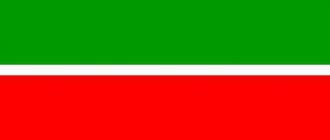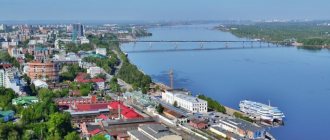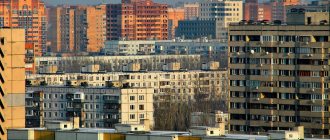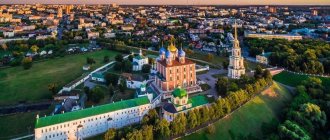Samara is the center of the region
Without exaggeration, Samara can be considered a big city. More than a million people live here, with the population reaching 1,163,000 people. Due to environmental problems, many people want to leave the city; the largest settlement in the region is characterized by disurbanization, when residents leave for the countryside. Traffic jams are considered the most pressing problem, especially in this regard, a number of areas that are regularly criticized by the population stand out.
- Kuibyshevsky;
- Central;
- Industrial.
These 3 areas have a big problem with traffic jams. The reason for this was the lack of interchanges, which are necessary in any million-plus population. Even if the population shows an outflow for several years in a row, this does not make it any easier for motorists. The main highways remain Moskovskoe Highway and Novo-Sadovaya Street. Both stand in the morning and evening. The average mash time is one and a half hours.
The situation with kindergartens in Samara is more or less. For example, the Industrial District has kindergartens, schools, gymnasiums, a Sports Palace, and many parks. Some residential complexes can demonstrate good municipal services that regularly remove snow. Thus, the availability of services from municipalities will depend strictly on the specific area. The Sovetsky district is considered to be perhaps the most densely populated, as new houses are regularly built here, cafes and other commercial establishments are opened. Infrastructure development is also associated with the opening of new industrial enterprises, where qualified personnel flock to find work. Therefore, in remote areas of Samara, the problems of the big city are not felt so acutely, but somewhere they make themselves felt every day. There is enough public transport, but its condition is depressing for locals.
Tolyatti
Full coat of arms of Tolyatti
The full coat of arms of the city of Tolyatti , adopted in 1996, consists of the historical coat of arms granted to Stavropol on October 22, 1778 and the new coat of arms developed in 1982 and 1996, united in a four-part shield. The new coat of arms occupies the first and fourth quarters of the shield, and the historical coat of arms occupies the second and third.
Small coat of arms of Tolyatti
The small coat of arms of Tolyatti , adopted in 1996, is a golden-yellow composition of three emblems on a blue heraldic shield. The central emblem is an expanded square, divided into four parts, displaying the urban structure of Tolyatti; in the lower part there is an image of a cross - the symbol of Stavropol-on-Volga. The central emblem is framed by three serf caps (a stylized image of the coat of arms of Stavropol-on-Volga) and symmetrical rooks (a symbol of the Volga freemen). In the upper part there is a stylized image of the Zhiguli Mountains.
Togliatti is a large city near the Zhiguli Mountains
Tolyatti is familiar with the problem of dense population first hand. Residents of the Volga region, of whom there are over 450 thousand people, suffer from traffic jams every day. In total, Togliatti is inhabited by more than 700 thousand people. The imbalance in the distribution of the population is caused by the AvtoVAZ enterprise. In addition, a natural increase in numbers is recorded every year. There is an increased number of schools, as well as higher education institutions. But the commercial basis is cutting off the desire of Togliatti residents to get a higher education, since the prices for education are too high. Traffic jams in Tolyatti are rare. At least, there are no significant congestions if we compare them with those that are typical for million-plus cities. There are quite a lot of schools and kindergartens, so city residents rarely face a shortage of places.
Hospital departments undergo regular repairs, which require a lot of time, but are beneficial to the institutions - they can get to doctors with almost no problems, especially for paid appointments.
The situation with housing is much more complicated. The big city is divided into areas where there are affordable apartments with a contingent of alcoholics living in the neighborhood, and when it comes to “livable” houses, there is a high price level.
Distance from Samara to Russian cities
Distances from major Russian cities to Samara. Distance between Russian cities. Calculation of distances between cities may contain small errors.
Distance from Samara to Abakan - 3346 km Distance from Samara to Arkhangelsk - 1809 km Distance from Samara to Astrakhan - 1239 km Distance from Samara to Barnaul - 2672 km Distance from Samara to Belgorod - 1236 km Distance from Samara to Birobidzhan - 7316 km Distance from Samara to Blagoveshchensk - 6944 km Distance from Samara to Bryansk - 1270 km Distance from Samara to Veliky Novgorod - 1605 km Distance from Samara to Vladivostok - 8263 km Distance from Samara to Vladikavkaz - 1637 km Distance from Samara to Vladimir - 968 km Distance from Samara to Volgograd - 810 km Distance from Samara to Volzhsky - 809 km Distance from Samara to Vologda - 1307 km Distance from Samara to Voronezh - 980 km Distance from Samara to Gorno-Altaisk - 2897 km Distance from Samara to Grozny - 1627 km Distance from Samara to Yekaterinburg - 999 km Distance from Samara to Ivanovo — 975 km Distance from Samara to Izhevsk — 574 km Distance from Samara to Irkutsk — 4293 km Distance from Samara to Yoshkar-Ola — 542 km Distance from Samara to Kazan — 357 km Distance from Samara to the city Kaliningrad - 2302 km Distance from Samara to Kaluga - 1169 km Distance from Samara to Kemerovo - 2706 km Distance from Samara to Kirov - 753 km Distance from Samara to Kostroma - 1082 km Distance from Samara to the city Krasnodar - 1552 km Distance from Samara to Krasnoyarsk - 3239 km Distance from Samara to Kurgan - 1147 km Distance from Samara to Kursk - 1189 km Distance from Samara to Kyzyl - 3748 km Distance from Samara to the city Lipetsk - 852 km Distance from Samara to Magadan - 9100 km Distance from Samara to Magas - 1629 km Distance from Samara to Magnitogorsk - 783 km Distance from Samara to Makhachkala - 1675 km Distance from Samara to the city Moscow - 1066 km Distance from Samara to Murmansk - 2704 km Distance from Samara to Naberezhnye Chelny - 413 km Distance from Samara to Nalchik - 1592 km Distance from Samara to Nizhny Novgorod - 738 km Distance from Samara to Nizhny Tagil - 1133 km Distance from Samara to Novokuznetsk - 2829 km Distance from Samara to Novosibirsk - 2448 km Distance from Samara to Omsk - 1795 km Distance from Samara to Orel - 1146 km Distance from Samara to Orenburg - 438 km Distance from Samara to Penza - 427 km Distance from Samara to Perm - 873 km Distance from Samara to Petrozavodsk - 2084 km Distance from Samara to Pskov - 1819 km Distance from Samara to Rostov-on-Don - 1277 km Distance from Samara to Ryazan - 872 km Distance from Samara to St. Petersburg - 1789 km Distance from Samara to Saransk - 524 km Distance from Samara to Saratov - 419 km Distance from Samara to Smolensk - 1458 km Distance from Samara to Sochi - 1791 km Distance from Samara to Stavropol - 1379 km Distance from Samara to Sterlitamak - 569 km Distance from Samara to Stavropol Surgut - 2141 km Distance from Samara to Syktyvkar - 1232 km Distance from Samara to Tambov - 717 km Distance from Samara to Tver - 1243 km Distance from Samara to Togliatti - 95 km Distance from Samara to Tolyatti Tomsk - 2708 km Distance from Samara to Tula - 1064 km Distance from Samara to Tyumen - 1339 km Distance from Samara to Ulan-Ude - 4731 km Distance from Samara to Ulyanovsk - 250 km Distance from Samara to Ufa — 455 km Distance from Samara to Khabarovsk — 7498 km Distance from Samara to Khanty-Mansiysk — 2013 km Distance from Samara to Cheboksary — 533 km Distance from Samara to Chelyabinsk — 862 km Distance from Samara to Cherepovets - 1368 km Distance from Samara to Cherkessk - 1494 km Distance from Samara to Chita - 5383 km Distance from Samara to Elista - 1106 km Distance from Samara to Yuzhno-Sakhalinsk - 8406 km Distance from Samara to Yakutsk - 7462 km Distance from Samara to Yaroslavl - 1103 km
| Distance from Moscow | Distance from Volgograd | Distance from Ekaterinburg |
| Distance from Kazan | Distance from Nizhny Novgorod | Distance from Novosibirsk |
| Distance from Omsk | Distance from Rostov-on-Don | Distance from Samara |
| Distance from St. Petersburg | Distance from Ufa | Distance from Chelyabinsk |
Check out other popular maps of countries around the world:
| Map of Russia | Map of Italy | Germany map | Israel Map |
| Map of Spain | Turkey Map | USA map | Armenia Map |
| Poland map | Greece map | Bulgaria Map | Czech Republic Map |
| Kazakhstan map | China map | UK map | Switzerland map |
WORLD MAP |
MAP OF AMERICA | MAP OF AFRICA | MAP OF CRIMEA | MAP OF EURASIA 2022 © BigKarta.ru
Syzran is a simple and densely populated city
Syzran is inhabited by more than 170 thousand people. Traffic jams are rare in Syzran. But as for kindergartens and schools, the situation here is somewhat different. There are enough places, which is due to the outflow of the population. The situation is no better with housing, which can also be conditionally called affordable, but the city is characterized by a partial decline in the housing stock. Some buildings are made of wood, so people in them have a hard time living with the onset of cold weather. Typical public transport is represented by minibuses, which are packed with people.
There are also trolleybuses that often break down and are therefore rarely used. Finding employment is not easy, because the bulk of the population is employed in jobs that are considered the most promising for young professionals. Having gained experience at this enterprise, they move on to big cities. There are several other businesses, but the initial income is not enough for them, so as soon as a profitable vacancy appears, most begin to chase earnings. As a result, the most pressing problem for a small town remains the characteristic lack of work.
Mezentseva Galina Sergeevna
| Mezentseva Galina Sergeevna (b. November 8, 1952, Stavropol-Volzhsky, now Togliatti), Russian ballerina, Honored Artist of Russia (1978), State Prize of the RSFSR (1980). Since 1970, after graduating from the Leningrad Choreographic School (teacher N.V. Belikova), she worked at the Kirov Theater. She became the leading ballerina of this theater, dancing the roles of Odette-Odile, Raymonda, Nikia, Giselle, the fairy Lilac, Zarema, Aegina, Esmeralda (Notre Dame Cathedral). Performed the main role in the television film “The Stranger” based on A. Blok. | Galina Mezentseva in A. Adam’s ballet “Giselle” staged by the Kirov Theater. |
Novokuybyshevsk is a simple city
Novokuybyshevsk, with a population of just over 100 thousand people, is a very small city by the standards of large million-plus cities.
The small population and relatively new housing stock result in a relatively comfortable standard of living. The city's infrastructure is in a livable condition; there are many kindergartens and schools. The average number of kindergartens per district is approaching 30 institutions. Novokuybyshevsk schools are noted for their well-equipped classes. There are several medical institutions for the regional city, which provide services with varying success, but the problem of dense population has not yet made itself felt.
The overall result for the Samara region in terms of population can be called satisfactory. Typical problems are:
- Traffic jams.
- Lack of comfortable housing (the houses are mostly dilapidated).
- Infrastructure is insufficiently developed.
Significant problems with dense population await only Samara, which has become characterized by labor migration.
Settlements
Alekseevsky district
Bezenchuksky district
Bogatovsky district
Bolsheglushitsky district
Bolshechernigovsky district
Borsky district
Volzhsky district
Elkhovsky district
Isaklinsky district
Kamyshlinsky district
Kinelsky district
Kinel-Cherkasy district
Klyavlinsky district
Koshkinsky district
Krasnoarmeysky district
Krasnoyarsk district
Neftegorsky district
Pestravsky district
Pokhvistnevsky district
Privolzhsky district
Sergievsky district
Stavropol district
Syzran district
Khvorostyansky district
Chelno-Vershinsky district
Shentala district
Shigonsky district
The largest roads in the Samara region and their characteristics
| Road index | Name | Meaning | Length by region (km) | Estimated traffic intensity (vehicles/day) |
| E30 - M5 | Moscow — Samara — Chelyabinsk | federal highway | 351 | 19 000 |
| M5 | Ulyanovsk — Syzran | federal road | 132,5 | 4 800 |
| M5 | Samara — Orenburg | federal road | ||
| E121 - A300 | Samara - Bolshaya Chernigovka - Kazakhstan | federal road | 186 | 7 000 |
| P138 | Pugachev - Perelub - Kazakhstan | federal road | 140 | 9 000 |
| P228 | Syzran — Volgograd | federal road | 23 | 2 500 |
| P226 | Samara - Volzhsky | intermunicipal road | 96 | 6 000 |
| 36R-170 | Samara — Ulyanovsk | intermunicipal road | 74,2 | 3 700 |
| P225 | Samara — Buguruslan | intermunicipal road | 144 | 8 000 |
| Eastern bypass of Samara | 80 | 12 000 | ||
| P227 | Syzran - Shigony - Usolye | intermunicipal road | 63,4 | 2 000 |
| A235 - B45 | Pugachev - Samara | interregional road | 96 | 6 000 |
Cities with a population of over a million: which settlements are assigned this status
Before considering what million-plus cities there are in Russia for 2022, let's figure out which cities can be classified in this category.
In order for a city to receive the title of a millionaire, its population must exceed one million people within the city limits. In such cities, various resources related to industry, labor, cultural objects, and economic objects are concentrated. Millionaires are the center where people gather, the point of socio-economic development of one or several closely located regions.
First, Moscow and St. Petersburg became cities with millions of people in Russia. This happened around the end of the 19th century. Moreover, the cultural capital of our country received this title for the first time. The rapid growth of urban residents here continued until the revolutionary events that occurred in 1917. The next leap was observed after the introduction of the New Economic Policy; before the Great Patriotic War, over 3.25 million people already lived in the city.
Video: The most populated cities in Russia
As for Moscow, the growth rate of its population increased in 1712, when the capital was moved here from St. Petersburg. By 1897 the number reached 1 million people. The following years, the number either decreased or increased, under the influence of socio-economic and political factors. The post-Soviet era had a positive impact on population growth, despite the fact that the overall dynamics of the country's growth was negative.









